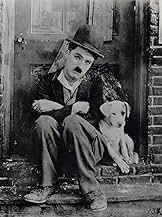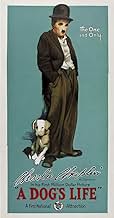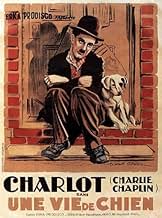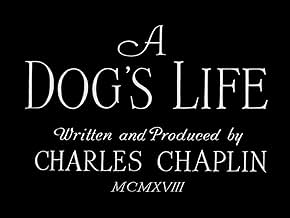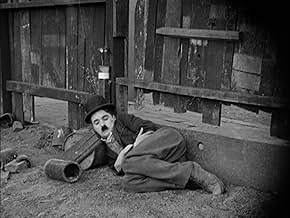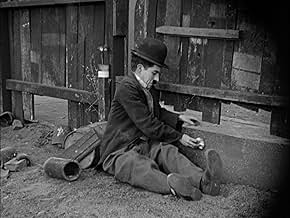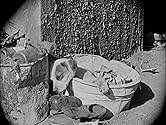IMDb RATING
7.6/10
9.9K
YOUR RATING
The Little Tramp and his dog companion struggle to survive in the inner city.The Little Tramp and his dog companion struggle to survive in the inner city.The Little Tramp and his dog companion struggle to survive in the inner city.
Edna Purviance
- Bar Singer
- (uncredited)
Dave Anderson
- Bartender
- (uncredited)
Bert Appling
- Unemployed Man
- (uncredited)
Albert Austin
- Crook
- (uncredited)
Henry Bergman
- Fat Unemployed Man
- (uncredited)
- …
Alva D. Blake
- Man in Dance Hall
- (uncredited)
Mel Brown
- Employment Agency Clerk
- (uncredited)
- …
Minnie Chaplin
- Dance-Hall Dramatic Lady
- (uncredited)
Syd Chaplin
- Lunchwagon Owner
- (uncredited)
Dorothy Cleveland
- Woman in Dance Hall
- (uncredited)
Slim Cole
- Unemployed Man
- (uncredited)
Margaret Cullington
- Woman in Dance Hall
- (uncredited)
Billy Dill
- Man in Dance Hall
- (uncredited)
Margaret Dracup
- Woman in Dance Hall
- (uncredited)
Jack Duffy
- Man in Dance Hall
- (uncredited)
Robert Dunbar
- Old Man in Dance Hall
- (uncredited)
Ella Eckhardt
- Woman in Dance Hall
- (uncredited)
- Director
- Writer
- All cast & crew
- Production, box office & more at IMDbPro
Storyline
Did you know
- TriviaThis was Charles Chaplin's first film for First National Pictures under a $1M contract where Chaplin had full creative control over his films for the first time.
- GoofsDuring the fight at the lunch cart, one of the props holding up the awning gets knocked away. In subsequent shots, the prop is back in place.
- Quotes
Title Card: When dreams come true.
- ConnectionsEdited into The Chaplin Revue (1959)
Featured review
This was Charlie Chaplin's first film for First National, and with his pictures there, he could create movies of longer, or varied, length, rather than the two-reelers he was obliged to churn out before. His Mutual shorts were a vast improvement over his previous work, but watching them I'd sometimes get the sense that his ideas required more time to elaborate, to fully realize, or unfold. The hilarity of the gags in "A Dog's Life" result from this newly acquired freedom to expand his films.
I don't think it's one of Chaplin's most important works, or one of his best, but "A Dog's Life" is very funny and left me in high spirits. The crying set piece was hilarious. As well, Chaplin continued to use props and settings to his comedic advantage, such as with the missing boards and the door of his fenced home when he eludes a policeman in the beginning of the film.
Perhaps, the most interesting aspect of this one is the elaborate pantomime that goes on. The creation of the world within a silent film often created problems for lesser filmmakers on what the role of sound is within that world. There is obviously sound in the world of "A Dog's Life", but the tramp continually ignores it and oft prefers to use pantomime to express himself--or others, as in the elaborate scene using his hands. This demonstrated a lot of thought on Chaplin's part, and it's something that could be done only in the silent era. For all the comic genius in America at the time, the fact that the clowns couldn't talk shouldn't be overlooked, for it was full of advantages.
I don't think it's one of Chaplin's most important works, or one of his best, but "A Dog's Life" is very funny and left me in high spirits. The crying set piece was hilarious. As well, Chaplin continued to use props and settings to his comedic advantage, such as with the missing boards and the door of his fenced home when he eludes a policeman in the beginning of the film.
Perhaps, the most interesting aspect of this one is the elaborate pantomime that goes on. The creation of the world within a silent film often created problems for lesser filmmakers on what the role of sound is within that world. There is obviously sound in the world of "A Dog's Life", but the tramp continually ignores it and oft prefers to use pantomime to express himself--or others, as in the elaborate scene using his hands. This demonstrated a lot of thought on Chaplin's part, and it's something that could be done only in the silent era. For all the comic genius in America at the time, the fact that the clowns couldn't talk shouldn't be overlooked, for it was full of advantages.
- Cineanalyst
- Aug 28, 2005
- Permalink
Details
- Release date
- Country of origin
- Official sites
- Languages
- Also known as
- I Should Worry
- Filming locations
- Production company
- See more company credits at IMDbPro
- Runtime33 minutes
- Color
- Sound mix
- Aspect ratio
- 1.33 : 1
Contribute to this page
Suggest an edit or add missing content



